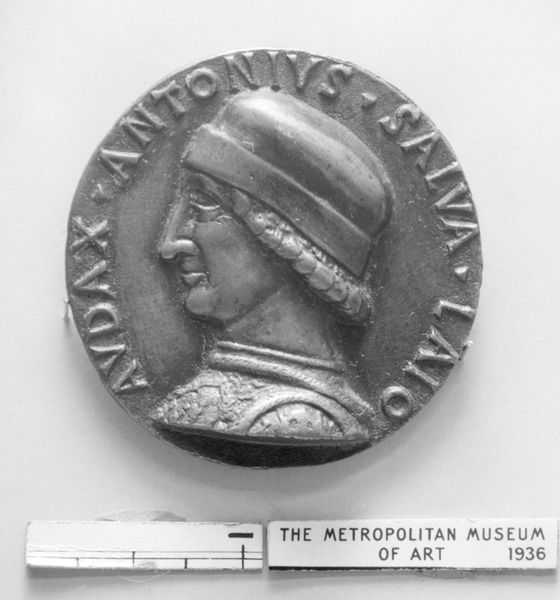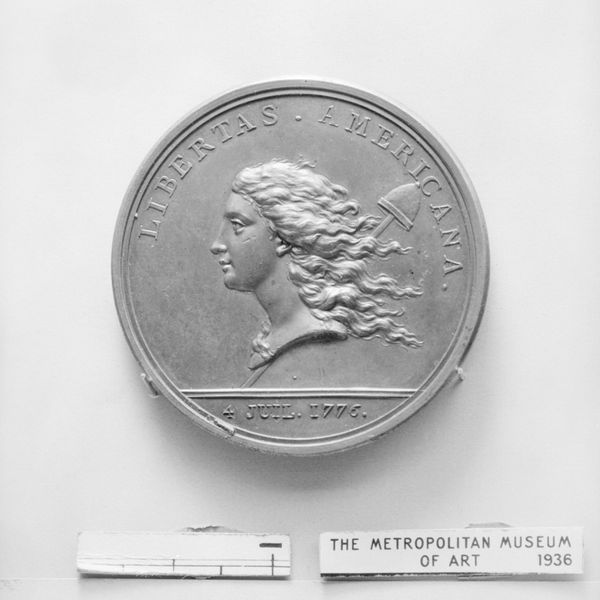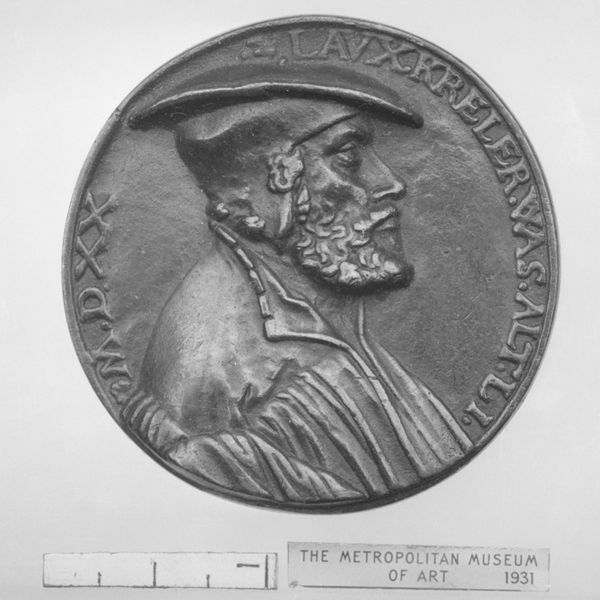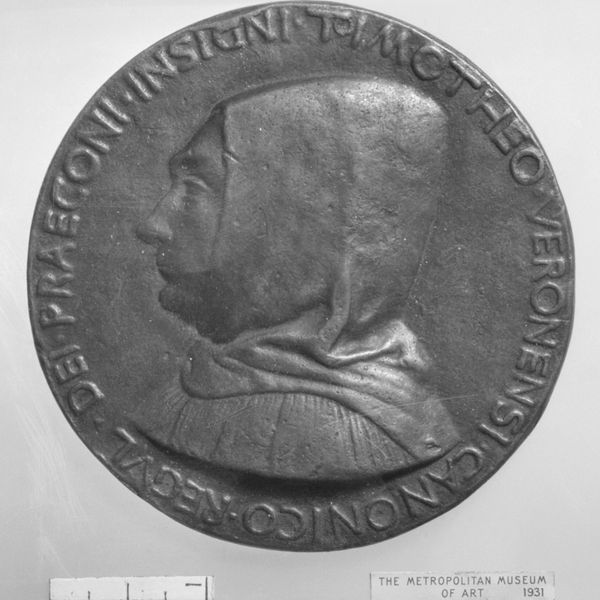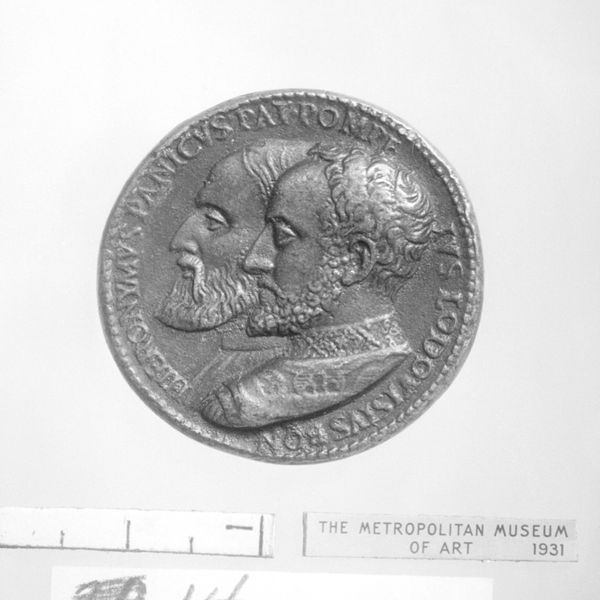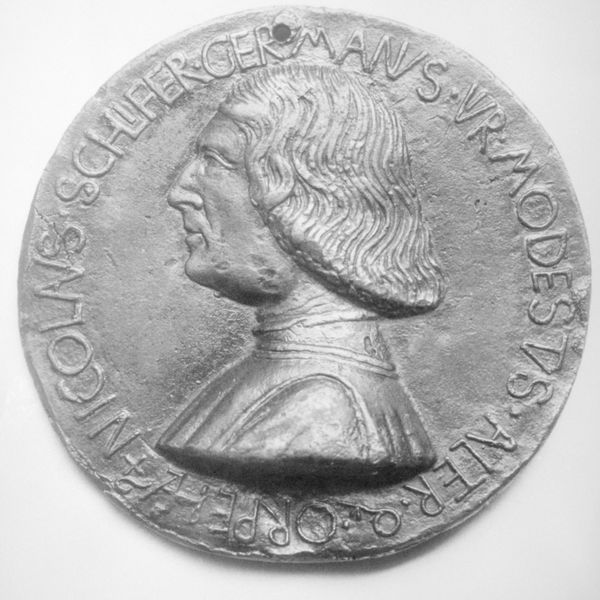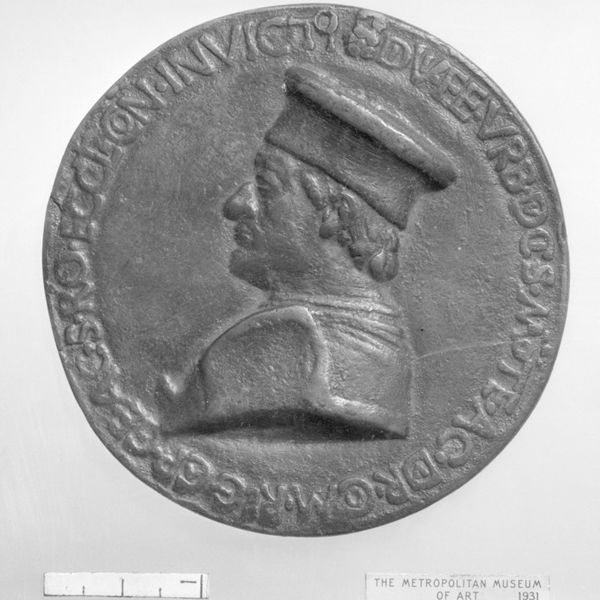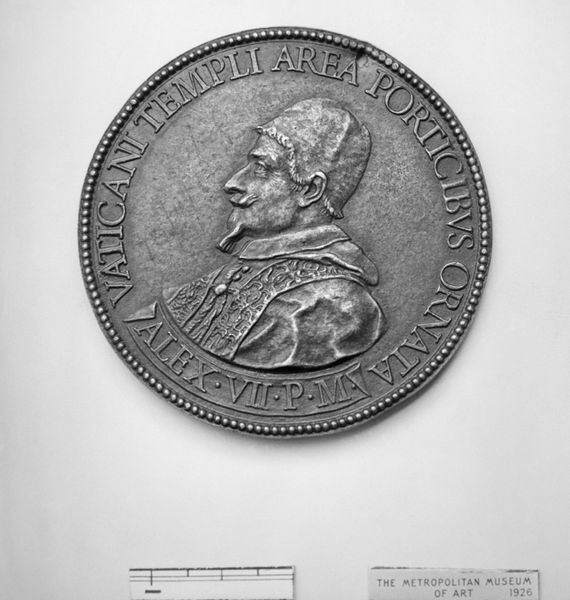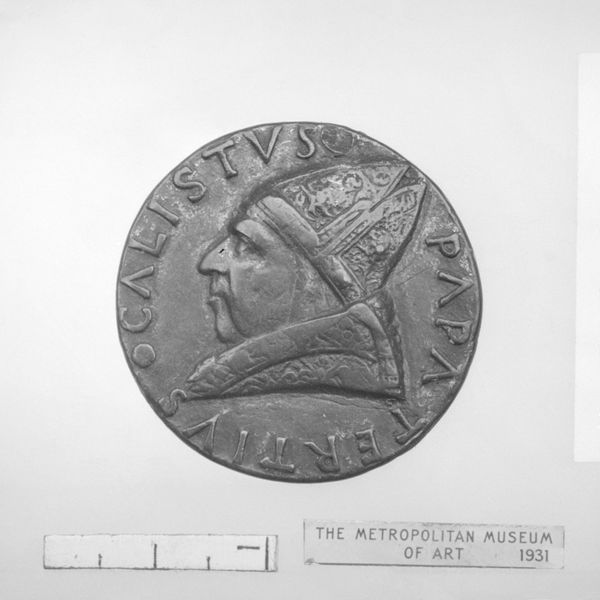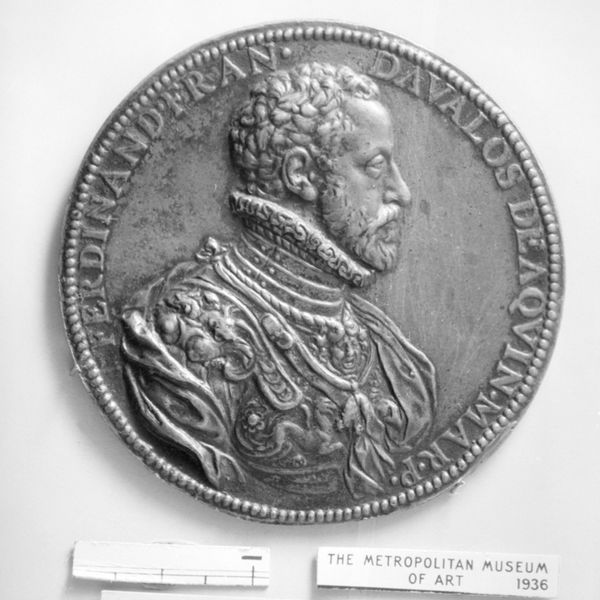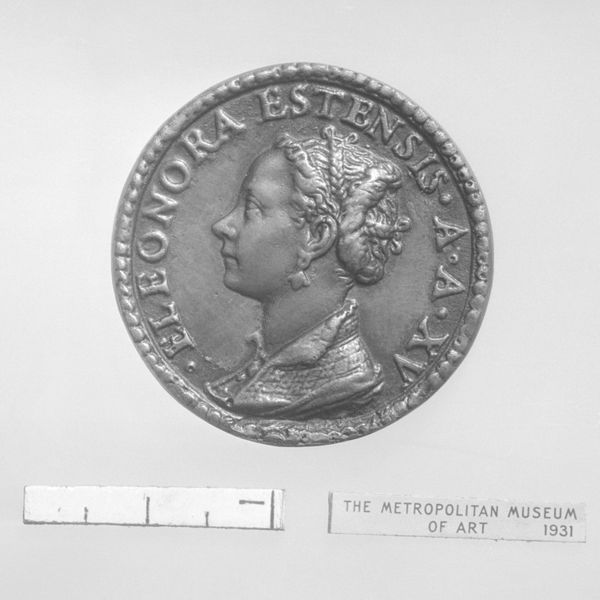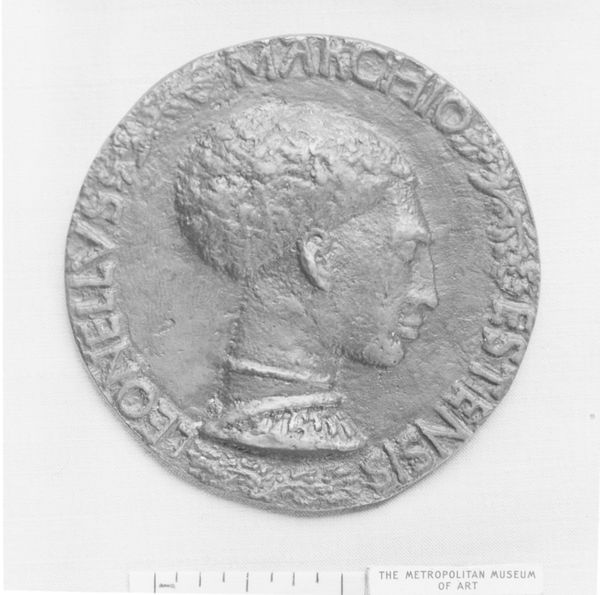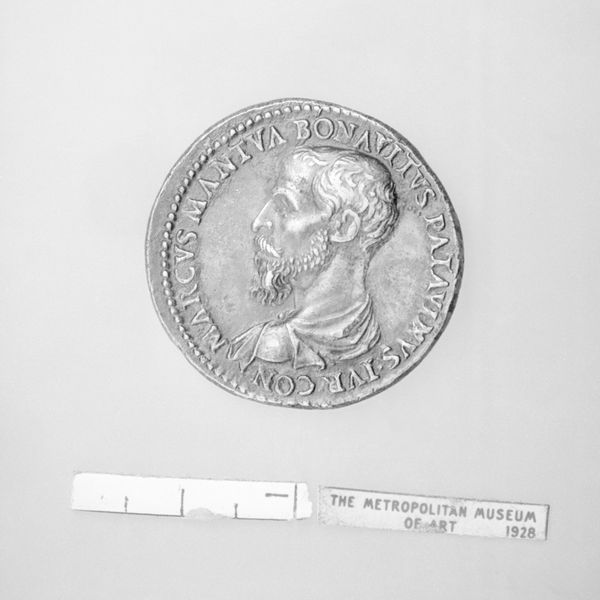
sculpture
#
medal
#
close up detail
#
sculpture
#
ring
#
sculptural image
#
close-up shot
#
unrealistic statue
#
close-up
#
sculpture
#
men
#
recipe
#
decorative-art
#
profile
#
close up
#
statue
Dimensions: Diameter: 1 7/8 in. (48 mm)
Copyright: Public Domain
Curator: What a striking piece! Philippe Danfrie the Elder's "Henry IV of France," dating from 1585 to 1595. It’s currently held at the Metropolitan Museum of Art. It's a sculptural medal. Editor: The immediate impression is one of power, yet constrained within that circular form. The detail is incredible, given the scale, a sort of frozen regal moment. It projects an aura of old-world authority. Curator: Absolutely. The materiality of this medal, likely bronze or perhaps a similar alloy, speaks volumes about the means of production at the time. Crafting this profile bust required significant skill and labor, embedding the king's image into a durable object, designed to last. The act of circulating the image in medal form— how do you think this act as medium itself interacts with its audiences? Editor: Precisely. Medals like these were tools for shaping public perception. Henry IV’s image, particularly after the turmoil of the French Wars of Religion, aimed to solidify his authority and legacy. Consider also the audience; likely elites and powerful individuals who could afford or access such objects, it functioned as a constant, material reminder of power relations. How the King is rendered with such stern precision, suggests this circulation sought a message of lasting authority. Curator: The production also tells us much about workshops and hierarchies. It represents a whole system of craftsmanship that has now shifted, or, in many ways, is obscured. Editor: Exactly. The very choice of rendering Henry IV in this classical profile alludes to the desire for enduring historical significance. Also note, the material permanence of the medal contrasted to fleeting word-of-mouth campaigns, suggests the historical moment it tries to secure itself into. The inscription too; it emphasizes genealogy and divine right to legitimize his reign in a time of immense socio-political fracturing, right? Curator: The medal acted as a miniature billboard circulating visual claims about status. A king could literally mint legitimacy. Editor: True. "Henry IV of France" is not just a portrait; it’s a potent symbol embedded in a matrix of power, crafted to speak volumes about identity and rule in a turbulent era. Curator: Looking at its materiality and process, its value stems from this rich understanding of its circulation. Editor: Ultimately, viewing art with an awareness of social context truly illuminates its intended purpose and effects, particularly in our own contexts of wealth and power.
Comments
No comments
Be the first to comment and join the conversation on the ultimate creative platform.
